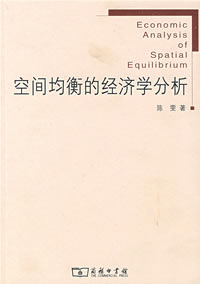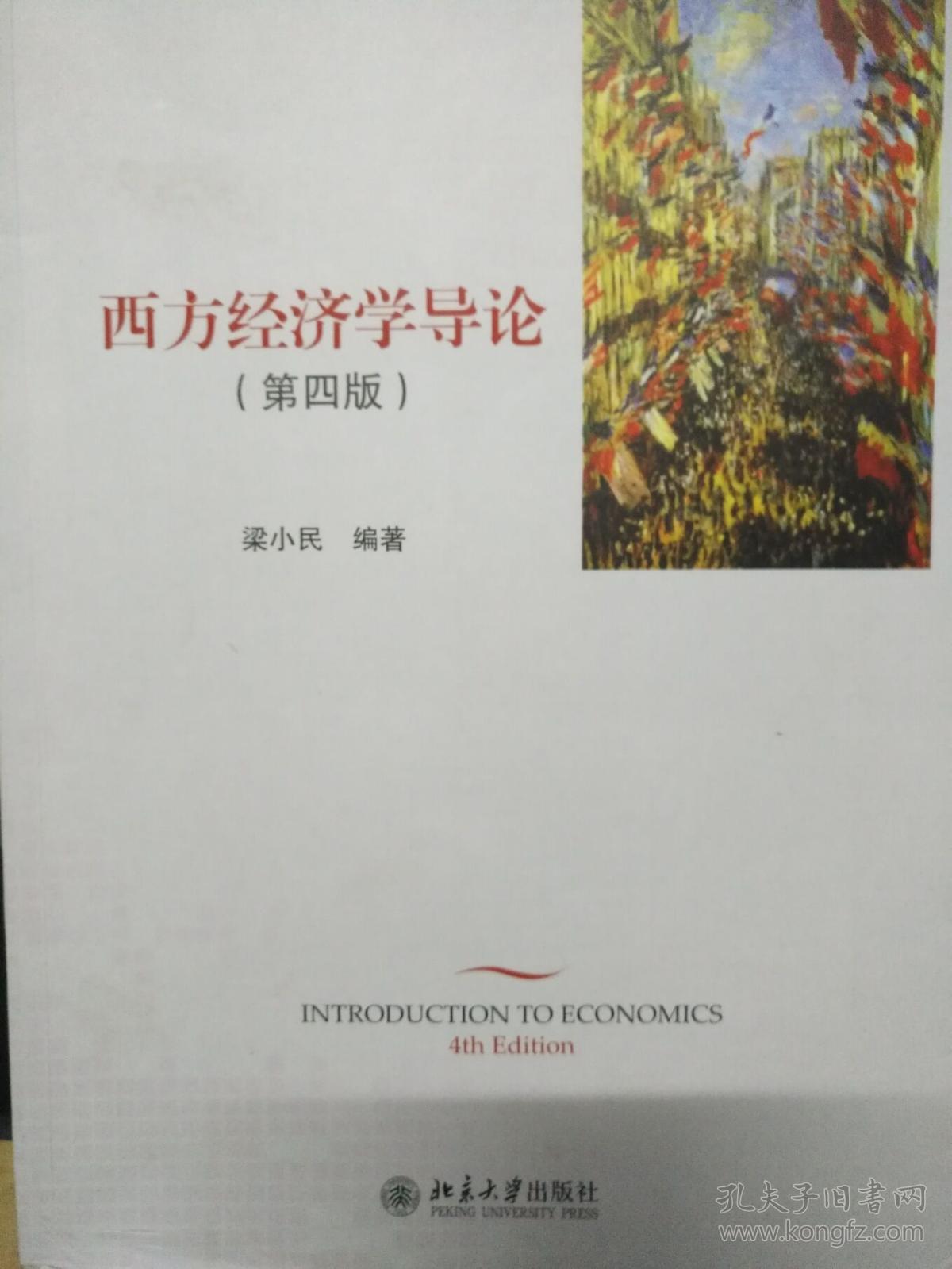第四章 边际革命与新古典经济学 4.1 边际革命总论 4.2 新古典经济学的理论体系与特征 4.3 边际革命的兴起 4.4 经济学的第二次综合:马歇尔的经济理论 4.1 边际革命总论 一、题解与定义 时间:19世纪70年代到20世纪20年代期间。 代表人物:杰文斯,门格尔,瓦尔拉斯,马歇尔,克拉克等。 建立了现代三大经济理论体系之一的“新古典经济学”。 边际革命的“革命性” 1、把经济理论(主要是价值论)建立在主观意义上,纳入主观心理的范畴。 2、宣称经济学是研究享乐并使其最大化的科学。 3、消费是追求和实现享乐的直接领域,因而是经济学研究的基础和出发点。 4、个人(家庭)的消费行为是研究的重点。 5、个人消费心理是经济分析的根本出发点和理论支撑点。 总结 “无论是经济学的结构,还是它的方法,都与古典经济学截然不同”(斯皮格尔,P.435) 二、边际革命图解 三个先驱人物→兴起的三杰→扩展与门派形成→现代微观经济学的发展 (一)三个先驱人物 1、【法国】古诺(1801~1877)财富理论的数学原理研究(1838年) 2、【德国】屠能(1783~1850)孤立国(1826年第一卷;1850年第二卷) 3、【德国】戈森(1810~1858)人类关系的法则及人类行为的规范(1854年 ) (二)兴起的三杰 1、【英】杰文斯(1835~1882)政治经济学理论(1871年) 2、【奥地利】门格尔(1840~1921)国民经济学原理(1871) 3、【法】瓦尔拉斯(1834~1910)纯粹经济学要义(1874) (三)扩展与门派形成 英国:埃奇沃思(1845~1926,数学心理学1881) 奥地利学派:门格尔(1840~1921)→庞巴维克(1851~1914,资本实证论,1888年)→维塞尔(1851~1926,自然价值,1889年) 洛桑学派:瓦尔拉斯(1834~1910)→帕累托(1848~1923,政治经济学讲义1906年) 剑桥学派:马歇尔(1842~1924) →庇古(1877~1959)《福利经济学》(1912年) 瑞典学派: 【瑞典】威克塞尔(1851~1926),《价值、资本与地租》(1893年),瑞典学派的先驱与奠基人,他影响了凯恩斯,也是公共选择学派的先驱。
真正的创始人是缪尔达尔(1898~1987)。 美国学派: 【美国】费雪(1867~1947):价值和价格理论的数学研究(1892) 【美国】J.B.克拉克(1847~1938):财富的分配(1899年) (四)现代微观经济学的发展 厂商理论( theory of the firm)的形成。 【英国】琼罗宾逊(1903~1983):不完全竞争经济学(1933年) 【美国】张伯伦(1899~1967):垄断竞争理论(1933年) 其他(略) 三、边际革命的三个先驱 1、【法国】古诺(1801—1877) 《关于财富理论的数学原理的研究》(1838) 数理经济学的鼻祖; 把需求和成本等概念解释为函数性的概念。有了古诺,需求表和需求函数以及向下倾斜的需求曲线就进入了经济学的文献; 提出了垄断理论,特别是双头垄断理论。厂商间的博弈。 三、边际革命的先驱 2、【德国】屠能(1783~1850) 《孤立国》(1826;1850) 边际生产力理论。 变量比例与替代原理。 利润最大化条件。 “屠能圈”与区位理论→区域经济学 “屠能圈” 市场化菜蔬园艺作物 森林 谷物种植带:作物轮作、牧场、休耕地 备耕地:狩猎区 目前我国的经验事实 相反的事实。
设施园艺、“绣花”农业等存在于远离中心城市的地方。 (1)交通? (2)城市化与不确定性? 三、边际革命的先驱 3、戈森(1810~1858) 《人类关系的法则及人类行为的规范》(1854年) 提出消费者心理感觉为基础的价值论。 第一定律:边际效用递减律。 第二定律:消费组合点在:花费在每一种商品上的最后一单位货币带来与花费在其他任何商品上的最后一单位货币相同的满足。 4.2 新古典经济学的理论体系与特征 一、新古典经济学的创新 1.主观效用价值论代替了劳动价值论; 2.研究领域从财富创造、经济增长转换到一定量资源的短期配置; 3.经济学的结构和方法都与古典经济学截然不同; 4.“均衡”成为经济分析的中心概念。 5.数学在经济分析中被广泛应用,经济文献开始布满符号和曲线图。 二、新古典经济学的理论结构 新古典主义的一切理论都建立对个别行为主体的经济行为分析基础上。 而这种分析,又由一组关于“理性经济行为”(Rationality)的公理性假设为前提。 二、新古典经济学的理论结构 (1)最大化行为假设; (2)在最大化选择过程中,包含着人们对各种方案的比较;而要使这种比较产生最大化选择的结果,人们的行为又必须至少满足以下三个假定:完全性反身性传递性 二、新古典经济学的理论结构 对“最大化行为”的分析,构成其他经济分析的基础。
萨缪尔逊在《经济分析的基础》中,将最大化行为分析视为经济学各种问题内在的“核心特征”和“基本原则”。 此为经济学的基本内核,无论何种经济学说,其“基本内核”是不变的。 三、新古典理论体系的基本特征 1、着重于从物质关系方面考察经济活动; 2、其理论分析结构具有封闭性;在这一理论体系中,所有的经济因素被分成两大类:(1)“市场变量”,包括各种相对价格、总价格水平、利润率、以及各种产品、要素和货币的供给和需求量;(2)“市场背景条件”,即瓦尔拉斯所称的“data”,也就是给定的作为论据的事实或推论的前提。 “市场背景条件” (1)个人的效用偏好结构; (2)现有资源财富总量(劳动、土地、资本); (3)以私有制为基础的财富分配关系,包括“利润索取权”;现有财富总量与分配关系相结合,决定个人所拥有的“禀赋”; (4)技术表现为生产函数或“投入—产出集”;在静态分析中,技术不变;在动态分析中,加上技术进步率,考察技术变迁所产生的影响。 “市场背景条件” (5)经济信息,包括对经济现状的认识和对未来的预期,信息完全; (6)在宏观分析中,加上货币存量; (7)在动态分析中,加上人口增长率; (8)有关经济机制的假定:在新古典的均衡分析中,都假定在私有制条件下的自由交换的资本主义市场机制;在非均衡分析中,往往假定存在“价格刚性”或“配额”等限制条件。

4.3边际革命的兴起 一、革命兴起的缘由 1870年代初,“三位一体”的诞生标志着边际革命的兴起。 革命内容:挑战古典经济学的基础——生产成本价值论,确立以边际效用为核心的主观价值论。 革命的缘由及目的(杰文斯) “曾有人认为经济学已近于完全。这种人,对于本书的内容,必难加以采纳。” “有许多经济学说,在我看来,既在形式上是科学的,且又与事实相调和。在这里,我特别要指出人口理论和地租理论。” “但我们不能因此便说我们关于价值的概念已经是完全的、最后的。” 杰文斯的定义 杰文斯:初版序:“在本书,我尝视经济学为快乐与痛苦的微积分学,摆脱前辈意见的约束,来定立经济学的形式。据我看,这种形式,经济学终必采用。我早以为,经济学既为讨究量的科学,自亦须在事实上,成为数学的科学。” 在1879年的再版序中,杰文斯提出用“Economics”代替“Political Economy”。 “我这本书的目的,就在研究这样的原理——即自利心与效用的力学。“我主张,一切科学的经济学家皆须是数理的经济学家。” 二、杰文斯的经济理论 (一)人物简介 威廉.斯坦利.杰文斯(1835~1882) 青年时代在伦敦大学学习,其兴趣偏于自然科学,尤其是化学。
一度辍学去澳大利亚(悉尼)供职于造币厂。 1859年(24岁)回到英国,复学于伦敦大学。 历任曼彻斯特欧文学院(1863~1876)和伦敦大学(1876~1880)的政治经济学教授。 1872年,被选为英国皇家学会会员。 (二)主要著作 《The Coal Question》(1865年) 《逻辑要义》(1870年)(“他的逻辑学著作曾是世界许多地方好几代人的教材,读者的数量远远超过了他经济学著作读者的数量,是逻辑学著作使杰文斯广为人知”,斯皮格尔,443页) 《政治经济学理论》(1871年) 《科学理论》(1874年) (三)杰文斯在经济学史上的地位 边际效用学派的创立者 数理经济学派的创立者 杰文斯没有像门格尔那样创立了“奥地利学派”,也没有像瓦尔拉斯那样创立“洛桑学派”,也没有像他的同胞马歇尔那样,创立“剑桥学派”。 (四)《政治经济学理论》的结构与内容 The Theory of Political Economy,1871,1879, 中文版,郭大力译,中华书局,1936年;商务印书馆,1984年重印。 篇章结构 1、导论 2、快乐与痛苦论 3、效用论 4、交换论 5、劳动论 6、地租论 7、资本论 8、结论 (五)杰文斯的经济学 1、经济学是什么? “经济学是快乐与痛苦的微积分学。
”(中文:2) “经济学这种科学,是建立在少数貌似单纯的概念上。效用、财富、价值、商品、劳动、土地、资本,是这门学问的元素。”(中文:29) “经济学如果是一种科学,它必须是一种数学的科学。”(中文:30) “经济学史演绎的科学。”(中文:40) “(经济学是)自利心与效用的力学”(中文:7~8) 2、哲学基础:边沁的功利主义 “边沁的思想是本书理论的出发点。”(中文12) “我们必须接受边沁关于这个问题(指快乐与痛苦)的意见。”(中文:45) “快乐和痛苦无疑是经济计算的最终目的。以最小的努力获得欲望的最大满足,以最小厌恶的代价换取最大企望的成果—换言之,使快乐增至最高度是经济学的课题。”(中文:51) “凡能引起快乐或避免痛苦的东西,都可以有效用”(中文:51) 3、效用理论 商品与效用 负商品(discommodity)与负效用(disutility) “总效用”和“最后效用程度”(final degree of utility); 没有区分基数效用和序数效用,但却是“序数效用”的先驱。他指出:“我们罕能断言,乃至决不能断言,甲种快乐恰好等于乙种快乐的若干倍数。”(中文:36)。
4、交换理论 该理论适用的市场是:包括两个或更多的人,处置两种或更多的商品,对于资本存量、交换的愿望和交换的比率具有完全信息。 命题:两种商品交换的比例,是交换之后诸商品量的最后效用程度的比率的倒数。(中文:87) 5、劳动理论 经济学所研究的“劳动”,是指“非完全由立即结果报酬的努力”(133),而不是“一切身心的努力”(132)。 劳动量=劳动强度*劳动时间。 需要与劳动之间的均衡。延长劳动的边际痛苦=所得的边际效用。 劳动如何分配:若生产两种商品,均衡点在哪里? 7、经济周期理论 Investigations in Currency and Finance,?? 太阳黑子理论(10.45年周期)。 方法:统计方法,即“归纳法”。 1721~1878年间的经济周期是10.46年。 逻辑:太阳黑子→粮食产量(英国、印度)→粮食价格→国际贸易→英国经济。 资料来源:【美国】史蒂文普雷斯曼:思想者的足迹:五十位重要的西方经济学家,江苏人民出版社,2001年,122~123。 如何看待? 在现代经济体系运行中,经济体系内部力量的影响力远远大于自然体系力量的影响力。 理论的价值,首先在于“解释”。

弗里德曼:理论在于“好用与否”。 二、门格尔的经济理论 (一)人物简介、著作 卡尔.门格尔(1840~1921) 奥地利学派的领袖。 《国民经济学原理》(1871)出版后,门格尔出任维也纳大学的讲师(1879~1903) 由于使用通俗的方式表达其边际原理,其影响力远大于数理学派。 (二)门格尔的经济学方法 1、个人主义方法论 方法论个人主义的原则在于这样一种信念,即个人构成了人之科学中分析的终极单位。根据这项原则,所有的社会现象在不考虑有目的的行动者个人的计划和决策的情况下,是不可能得到理解的。 关于“个人主义方法论” 基本命题: 1、人之个体乃是社会、政治和经济生活中惟一积极主动的参与者; 2、个人在决策时将为了自己的利益行事,除非受到强制; 3、没有人能够像利益者个人那样了解自身的利益。 关于“个人主义方法论” 哈耶克(1899~1992):英籍奥地利人,1938年入英籍。获得1974年诺贝尔经济学奖。新自由主义的代表人物。 首先是一种社会理论; 其次是由此而衍生出来的政治准则。 2、抽象演绎方法 1883年,门格尔发起了与德国历史学派施莫勒的方法论论战,被称为经济学史上的第一次方法论论战。
参见晏智杰:西方经济学说史教程,北京大学出版社,2002年,P.290-292 (三)门格尔的经济理论 1、主观效用价值论。与杰文斯不同,他用主观上可以感觉到的需要的方式而不是以快乐的方式提出他的论证; 2、归算论——要素价格的决定将边际效用原则扩展到生产和分配领域;生产要素的价格决定于它所生产的物品的边际价值。 三、瓦尔拉斯的经济理论 (一)人物简介 瓦尔拉斯(1834~1910)是数理经济学派中瑞士洛桑学派的创始人; 瓦尔拉斯出生于法国;(他的父亲是法国卡因学院的哲学教授,后来转而研究经济学,并于1831年出版过《财富本质和价值来源》) 瓦尔拉斯作过期刊编辑,开办过生产合作银行。 他曾希望在法国的高等院校任教,但没有成功。 1870年,瓦尔拉斯应瑞士洛桑学院的聘请担任经济学教授。 1892年,因健康原因辞职,意大利的帕累托(1848-1923)成为他的继承者。 法文版:1874年初版;1900年,第四版。 英文版:Elements of Pure Economics or The Theory of Social Wealth,1953年,威廉·贾菲译。 中文版: 纯粹经济学要义:或社会财富理论,1989年,蔡受百译,商务馆。
(二)瓦尔拉斯的经济理论 代表著作:《纯粹经济学要义》(1874年)。 1、将经济学分为:纯粹经济学、社会经济学、应用经济学。 批评斯密和萨伊对政治经济学定义、性质、范围和目的的论述;(1:1) 把原来的政治经济学划分为:纯粹经济学(求真)、应用经济学(求效用)、经济伦理学(求善)。 努力把(政治)经济学建设成“精密科学”,就像力学和天文学那样(27)。欲达此目的,就必须使用数学这个工具,因为,“数学方法不是实验方法,而是推理方法。”(55) 2、边际效用价值论。用“稀少”表示“边际效用”;商品的价值实体是边际效用;生产要素的价值决定于其参与制造的商品的价值。 3、一般均衡理论。这是瓦尔拉斯对经济学的“独特”贡献。 4、一般均衡分析方法。 一般均衡分析 即:普遍联系法则; “一切决定于其他一切”(J.罗宾逊); “任何一个角落的某种变动,一般都会波及到最遥远的另一个角落产生某种影响”; 在理论上,发展为“阿罗—德布鲁”模型 在应用上,里昂惕夫的“投入——产出”法。 4.4 经济学的第二次综合:马歇尔的经济理论Natura non facit saltum 马歇尔像 Alfred Marshall (1842年7月26日~1924年7月13日) 引言 在边际革命的扩展中,边际主义同英国古典经济学走向融合,其创始人和最伟大代表是剑桥学派首领马歇尔,其代表作是1890年出版的《经济学原理》,马歇尔的经济理论被称为经济学史上的第二次大综合。
这种合流,促使边际主义从蓬勃发展、异彩纷呈走向成熟和稳定,从锋芒毕露走向平和与持重,从极端走向全面,从异端走向正宗,成为继古典经济学之后的新主流经济学—新古典经济学(Neo-classical Economics)。 一、生平简介 曾在英国剑桥大学学习数学。 1868~1877年,任剑桥大学数学讲师,期间兴趣逐渐转向经济学。 1877~1882年,任布里斯托尔大学的学院主任 1883~1884年,他接替汤因比任牛津大学巴里奥学院的讲师。 1885年,任剑桥大学经济学教授,剑桥学派创始人。 1903年,在剑桥大学设立独立的经济学学院与经济学学位。 1908年退休。后,仍从事写作。 二、代表作品 《经济学原理》(1890年) 《工业与贸易》(1919年) 《货币、信用与商业》(1923年) 三、《经济学原理》的结构与内容 版本: Principles of Economics 初版,1890年; 1920年,第八版(作者生前最后版)。 中文版,商务馆,上卷,1964年,朱志泰译;下卷,1965年,陈良璧译。 结构与内容【约66万字】 第一篇:导言 第一章绪论 第二章经济学的实质 第三章经济概括即经济规律 第四章经济研究的次序与目的 Book One: Preliminary Survey Chapter 1: Introduction Chapter 2: The Substance of Economics Chapter 3: Economic Generalization or Laws Chapter 4: The Order and Aims of Economic Studies 第二篇:若干基本概念 第一章 绪论 第二章 财富 第三章 生产。

消费。劳动。必需品 第四章 收入。资本 Book Two: Some Fundamental Notions Chapter 1: Introductory Chapter 2: Wealth Chapter 3: Production, Consumption, Labour, Necessaries Chapter 4: Income, Capital 第三篇:论欲望及其满足(消费理论) 第一章 绪论 第二章 欲望与活动的关系 第三章 消费者需求的等级 第四章 欲望的弹性 第五章 一物不同的选择。立即使用与延缓使用 第六章 价值与效用 Book Three: On Wants and Their Satisfaction Chapter 1: Introductory Chapter 2: Wants in Relation to Activities Chapter 3: Gradations of Consumers' Demand Chapter 4: The Elasticity of Wants Chapter 5: Choice between Different Uses of the Same Thing Chapter 6: Value and Utility 第四篇:生产要素(生产理论。
土地、劳动、资本、组织。共13章) Book Four: The Agents of Production 第五篇:需求、供给与价值的一般关系 (均衡价格理论和交换理论,共15章) Book Five:The General Relations of Demand,Supply and Value 第六篇:国民收入的分配 (分配理论。将第五篇的理论应用于“分配问题”。共安排13章,其中,劳动工资3章;资本的利息、利润3章;地租2章;) Book Six: The Distribution of the National Income 附录【12个】 一、自由工业和企业的发展 二、经济科学的发展 三、经济学的范围和方法 四、抽象推理在经济学中的运用 五、资本的诸定义 六~十二(略) 本书的历史地位与评价 这部著作在英语国家取得了与约翰.穆勒的《政治经济学原理》(1848年)同样的地位。在作者生前共出了8版,最后一版是1920年,并且继续被用作教科书多年。 马歇尔“隐藏了他用以分析的工具”,“不愿把外行人吓跑”(熊彼特,从马克思到凯恩斯:十大经济学家,江苏人民出版社,2003:第81页)。
四、马歇尔的“融合”体现在哪里? 体现在对经济学的性质、研究目的、方法以及主要课题等方面。 1、在研究方法方面,兼容“历史经验”和“抽象演绎”。书中包含大量经济史材料。为了“纯科学”,也运用“演绎推理”,包括数学工具。 四、马歇尔的“融合”体现在哪里? 2、继承古典经济学传统,关注并讨论有关社会哲学、社会政策方面的问题。 在第一篇、第四章“经济研究的次序与目的”、第四节中,马歇尔鼓励研究“一些社会实际问题”,这些问题是古典经济学家特别关注的。 第四节 鼓励现在的英国经济学家进行研究的实际问题,虽然这些问题不是完全属于经济学的范围。 The following problems seem to be of special urgency now in our own country: 采取什么行动,消除“经济自由”的不利影响。 How should we act so as to increase the good and diminish the evil influences of economic freedom, both in its ultimate results and in the course of its progress? If the first are good and the latter evil, but those who suffer the evil, do not reap the good; how far is it right that they should suffer for the benefit of others? 财富如何分配才好? Taking it for granted that a more equal distribution of wealth is to be desired, how far would this justify changes in the institutions of property, or limitations of free enterprise even when they would be likely to diminish the aggregate of wealth? In other words, how far should an increase in the income of the poorer classes and a diminution of their work be aimed at, even if it involved some lessening of national material wealth? How far could this be done without injustice, and without slackening the energies of the leaders of progress? How ought the burdens of taxation to be distributed among the different classes of society? 政府何为?边界在哪儿? When government does not itself directly intervene, how far should it allow individuals and corporations to conduct their own affairs as they please? How far should it regulate the management of railways and other concerns which are to some extent in a position of monopoly, and again of land and other things the quantity of which cannot be increased by man? Is it necessary to retain in their full force all the existing rights of property; or have the original necessities for which they were meant to provide, in some measure passed away? 突出反映在BOOK VI中 BOOK VI :The Distribution of the National Income Chapter XII:General Influences of Economic Progress CHAPTER XIII:Progress in Relation to Standards of Life 对《共同章程》关于工资的批评 6:13:10:中文,下:360~361。
教育也是改善工人阶级状况的手段 教育必须更加普及。学校教师必须懂得他的主要任务不是传授知识,因为即便是用几个先令买来的报刊上的知识,一个人的头脑也装纳不了。他的主要任务是培养学生的个性、能力和才干。(中文,下:368) 前页英文原文 Education must be made more thorough. The schoolmaster must learn that his main duty is not to impart knowledge, for a few shillings will buy more printed knowledge than a man‘s brain can hold. It is to educate character, faculties and activities. 生活水平提高的真正意蕴 The term the standard of life is here taken to mean the standard of activities adjusted to wants. Thus a rise in the standard of life implies an increase of intelligence and energy and self-respect; leading to more care and judgment in expenditure.(中文,下:342) 政府该如何对待“社会残渣” (Residuum of persons)? 1、“济困”要有“教育意义”;确定救助对象是一件困难的事情。

2、但必须消灭“社会残渣”,步骤是:坚持正常上学,儿童们的衣服应当整洁,身体干净,吃得饱。如做不到这些,其父母就应当受到警告和批评。封家和限制其父母的某些自由,作为最后手段。 (中文,下,365脚注) 失去信心是发生经济危机的深刻根源(中文,下:361~362) But though men have the power to purchase they may not choose to use it. For when confidence has been shaken by failures, capital cannot be got to start new companies or extend old ones. Projects for new railways meet with no favour, ships lie idle, and there are no orders for new ships.There is scarcely any demand for the work of navvies, and not much for the work of the building and the engine-making trades. “多米诺骨牌效应” In short there is but little occupation in any of the trades which make fixed capital. Those whose skill and capital is specialized in these trades are earning little, and therefore buying little of the produce of other trades. Other trades, finding a poor market for their goods, produce less; they earn less, and therefore they buy less: the diminution of the demand for their wares makes them demand less of other trades. 中文,下,362 Thus commercial disorganization spreads: the disorganization of one trade throws others out of gear, and they react on it and increase its disorganization. 失去信心是致命的(中文,下:362)。
The chief cause of the evil is a want of confidence. The greater part of it could be removed almost in an instant if confidence could return, touch all industries with her magic wand,and make them continue their production and their demand for the wares of others. 五、马歇尔对经济学的突出贡献 1、把“政治经济学”改为“经济学”。 2、率先在剑桥大学设立独立的经济学学院与经济学学位(1903年)。 3、将经济学概念演绎成简单的图表(凯恩斯,1924)。 4、创立“局部均衡分析法”;(鼻祖) 5、用“弹性”(elasticity)概念来测度因果关系。 6、创立购买力平价(purchasing power parity)概念,用于汇率分析。 前页资料来源: 【美国】史蒂文·普雷斯曼:思想者的足迹:五十位重要的西方经济学家,1999年;中文版,江苏人民出版社,2001年,第133~142页。
马歇尔的贡献:1 把“Political Economy”改为Economics”。 But it shuns many political issues, which the practical man cannot ignore: and it is therefore a science, pure and applied, rather than a science and an art. And it is better described by the broad term “Economics” than by the narrower term “Political Economy.”(中文:上:62) 六、马歇尔的分析工具与分析方法 (一)局部均衡分析(partial equilibrium approach) “一般均衡分析”的对称(general equilibrium approach) 特征:other things being equal如果其它情况事物不变 other things being equal 在中文上卷中,出现11次。 在中文下卷中,出现18次。
另外,在中文下卷59页,出现用其他语言表达的两次。 思考并添加“条件” 如果其他情况不变的话,则人们将会喜欢一种不必弄脏双手、享有良好的社会地位等等的职业。(中文,上:44) 如果其他情况相同,一个人住的地方,如有较好的气候、道路、用水和较为卫生的下水道,并有较好的报纸、书籍和娱乐及教育场所,在财富的最广的意义上,他就比别人享有较多的真正财富。(中文,上:78) 思考并添加“条件” 一个人所有的一物的数量越大,假定其他情况不变,则他对此物稍多一点所愿付的价格就越小。(中文,上:114) 如果其他情况不变,在一般使用中的一样商品的价格每有下跌,不论怎样轻微,也将增加它的总销售。(中文,上:118) 思考并添加“条件” 国民收入愈大,在其他条件不变的情况下,每种生产要素所得的份额也愈多。(中文,下卷:332) (二)均衡 equilibrium (1)调整 (2)两支相反力量达成的势均力敌的状态。 (三)均衡分析中的“时间”概念 1、需求分析中的“时间”概念 Book III. On Wants and Their Satisfaction Chapter IV. The Elasticity of Wants 对于时间因素在“P→Purchasing”分析中的应用,首先出现在第三篇论欲望及其满足、第四章欲望的弹性、第五节与时间因素有关的种种困难【中文,上:128】和第六节风尚的变化【中文,上:130】 。
3:4:5,第一自然段 So far we have taken no account of the difficulties of getting exact lists of demand prices, and interpreting them correctly. The first which we have to consider arises from the element of time, the source of many of the greatest difficulties in economics. 3:4:5,第二自然段 Thus while a list of demand prices represents the changes in the price at which a commodity can be sold consequent on changes in the amount offered for sale, other things being equal; yet other things seldom are equal in fact over periods of time sufficiently long for the collection of full and trustworthy statistics. There are always occurring disturbing causes whose effects are commingled with, and cannot easily be separated from, the effects of that particular cause which we desire to isolate. This difficulty is aggravated by the fact that in economics the full effects of a cause seldom come at once, but often spread themselves out after it has ceased to exist. 需求分析加入时间因素,实际上是要把以下四个因素考虑进去(中文,上:129) (1)the purchasing power of money (2)Next come the changes in the general prosperity and in the total purchasing power at the disposal of the community at large. (3)Next come the changes due to the gradual growth of population and wealth. (4)preference风尚的变化(中文,上:130~131) Next, allowance must be made for changes in fashion, and taste and habit, for the opening out of new uses of a commodity, for the discovery or improvement or cheapening of other things that can be applied to the same uses with it. In all these cases there is great difficulty in allowing for the time that elapses between the economic cause and its effect. For time is required to enable a rise in the price of a commodity to exert its full influence on consumption. Time is required for consumers to become familiar with substitutes that can be used instead of it, and perhaps for producers to get into the habit of producing them in sufficient quantities. Time may be also wanted for the growth of habits of familiarity with the new commodities and the discovery of methods of economizing them. 2、市场均衡分析中的“时间”概念 Book V. General Relations of Demand, Supply and Value. 第五篇 需求、供给与价值的一般关系 Chapter I. Introductory. On Markets § 6. Again, markets vary with regard to the period of time which is allowed to the forces of demand and supply to bring themselves into equilibrium with one another, as well as with regard to the area over which they extend. And this element of Time requires more careful attention just now than does that of Space. For the nature of the equilibrium itself, and that of the causes by which it is determined, depend on the length of the period over which the market is taken to extend. 【中文,下:23】 续前 We shall find that if the period is short, the supply is limited to the stores which happen to be at hand: if the period is longer, the supply will be influenced, more or less, by the cost of producing the commodity in question; and if the period is very long, this cost will in its turn be influenced, more or less, by the cost of producing the labour and the material things required for producing the commodity. 续前 These three classes of course merge into one another by imperceptible degrees. We will begin with the first class; and consider in the next chapter those temporary equilibria of demand and supply, in which “supply” means in effect merely the stock available at the time for sale in the market; so that it cannot be directly influenced by the cost of production. 紧接的 第二章是供求的暂时均衡 第三章是正常供求的均衡 第五章是关于长期与短期 个人的均衡:desireeffort The simplest case of balance or equilibrium between desire and effort is found when a person satisfies one of his wants by his own direct work. 一个具体市场中,买卖双方之间的均衡 “讨价还价”。
So the price may be tossed hither and thither like a shuttlecock, as one side or the other gets the better in the" higgling and bargaining" of the market. 劳动力市场与普通商品市场 这两种市场上的“讨价还价”或均衡过程有差别吗?如果有,是何差别?(中文,下,28~29) 预期对均衡过程的影响 Even in the corn-exchange of a country town on a market-day the equilibrium price is affected by calculations of the future relations of production and consumption. Anticipations of that rise exercise an influence on present sales for future delivery, and that in its turn influences cash prices. 中文,下:30,第三自然段 But in this and the following chapters we are specially concerned with movements of price ranging over still longer periods than those for which the most far-sighted dealers in futures generally make their reckoning: we have to consider the volume of production adjusting itself to the conditions of the market, and the normal price being thus determined at the position of stable equilibrium of normal demand and normal supply. 短期均衡和长期均衡 5:5:6:中文,下:63。
就短期而论,现有生产设备的数量实际上是固定的。但它们的利用率是随着需求而变化。 也就是说,项目设计的最大生产能力已经确定,但实际开工率会根据市场需求来定,换句话说,就是通常有闲置生产能力,没有满负荷。 “固定成本”不变,可变的是“可变成本”。 长期均衡 5:5:7。第七节。中文,下,66。 在长期中,生产所需的设备数量是根据对这些设备的产品的需求而加以调整的。 这里有扩大生产能力和压缩生产能力两种可能。 “固定成本”也在变化。 静态分析和动态分析 5:5:2。 人口不变(中文,下:58) 每个企业始终具有相同规模,有相同的商业往来(中文,下:57)。 在静态下,生产成本决定价值(中文,下:57)。 (四)替代、替代性、替代原则 Substitution. 在中文,上卷:第189页脚注中,详细列出与了讨论“替代”原理的章节。 有“替代”,才有“选择”。 (五)弹性 elasticity 一个测度因果关系强度的工具。 需求弹性:不同属性的商品,弹性不同同一商品,对于富人与穷人,弹性不同 供给弹性: 商品属性 有储备∕无储备 充分开工∕有闲置生产能力 (六)internal economiesexternal economies 对内部经济的讨论体现在第四篇第九章中Industrial Organization:Division of Labour,the Influence of Machinery。
对外部经济的讨论集中在第四篇第10、11、12章中。例如: “虽然在获得消息和进行试验方面,小制造商必然总是处于极大的不利地位,但是,在这方面,进步的大势对他仍是有利的。因为,在关于营业知识的一切事情上,外部经济与内部经济相比,正不断增大其重要性:报纸以及一切种类的行业和专门的出版物,不断地为他探听消息,并供给他许多他所需要的知识——不久以前,任何人如无力在许多遥远的地方雇用报酬很高的代理人,是不会得到这种知识的。其次,营业秘密大体上是减少了,方法上最重要的改良,经过试验的阶段之后,很难长久保守秘密,这都是对小制造商有利的。” (七)“愿望”是不能够被观察的 愿望(desire)或欲望(want)。“愿望是不能直接衡量的,而只能通过它们所引起的外部现象加以间接度量。而且在经济学主要研究的那些事例上,这种衡量是以一个人为了实现或满足他的愿望而愿意付出的价格来表现的。”(中文,上卷:111) 前页英文原文 Utility is taken to be correlative to Desire or Want. It has been already argued that desires cannot be measured directly, but only indirectly by the outward phenomena to which they give rise: and that in those cases with which economics is chiefly concerned the measure is found in the price which a person is willing to pay for the fulfilment or satisfaction of his desire. (八)均衡价格理论 均衡价格理论马歇尔经济学说的基础和核心 融供求论、边际效用论、生产费用论为一体 以“价格”代替“价值”,以价格论代替价值论 以“完全竞争(perfect competition)”为前提。
以“局部均衡分析”为基础。 非常强调“心理”因素的影响。 七、马歇尔经济理论体系的特征 属于微观体系。 以“自由竞争”为前提,以“均衡价格理论”为核心。 均衡价格论以边际效用论(marginal utility)、生产费用论和供求论相结合为特色。 分析方法:边际分析和局部均衡分析。 奠定了现代微观经济学理论和方法的基础,为现代微观经济学搭起基本框架。——(张培刚:微观经济学的产生和发展,湖南人民出版社,1997年,P.66) * *







